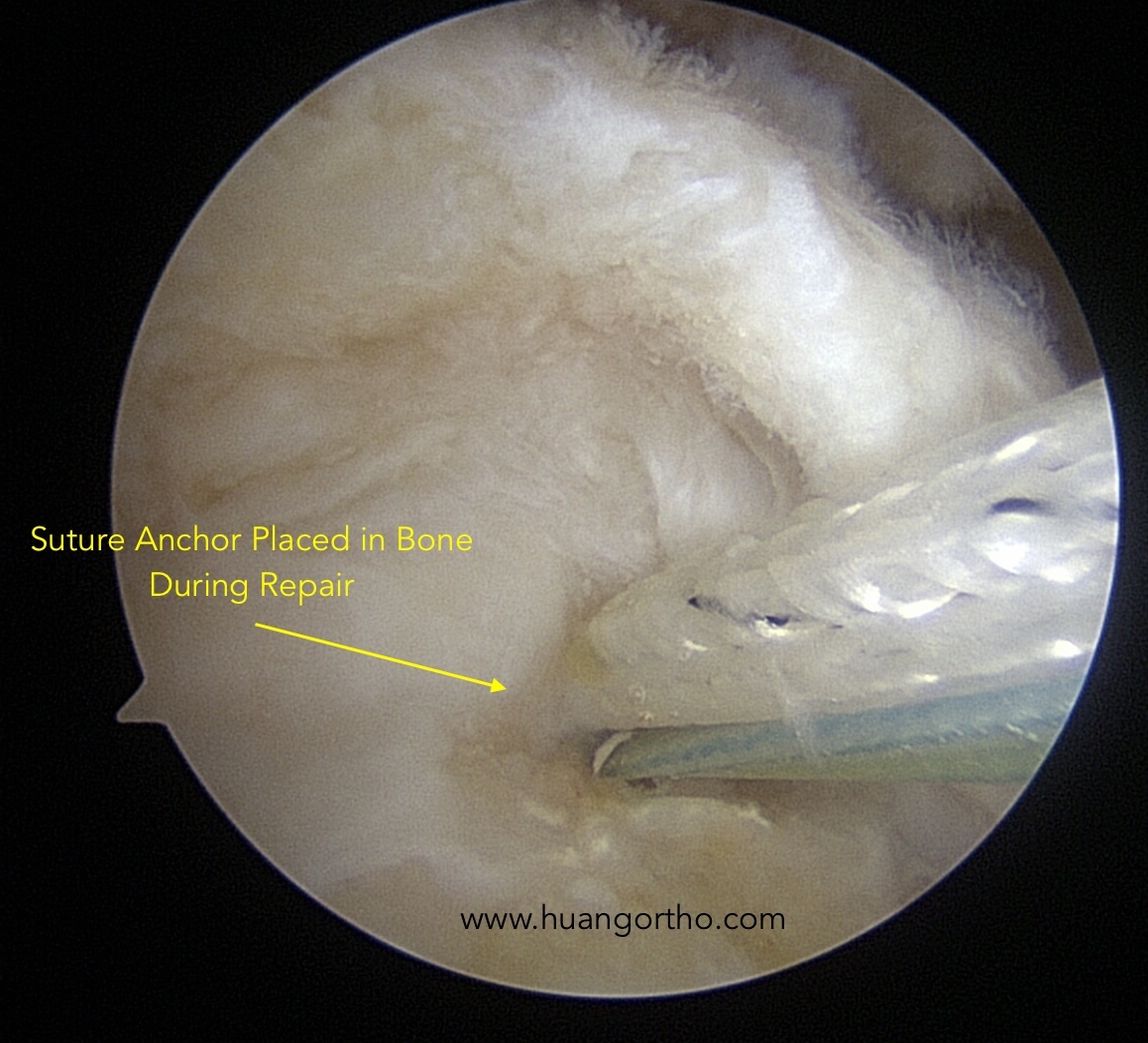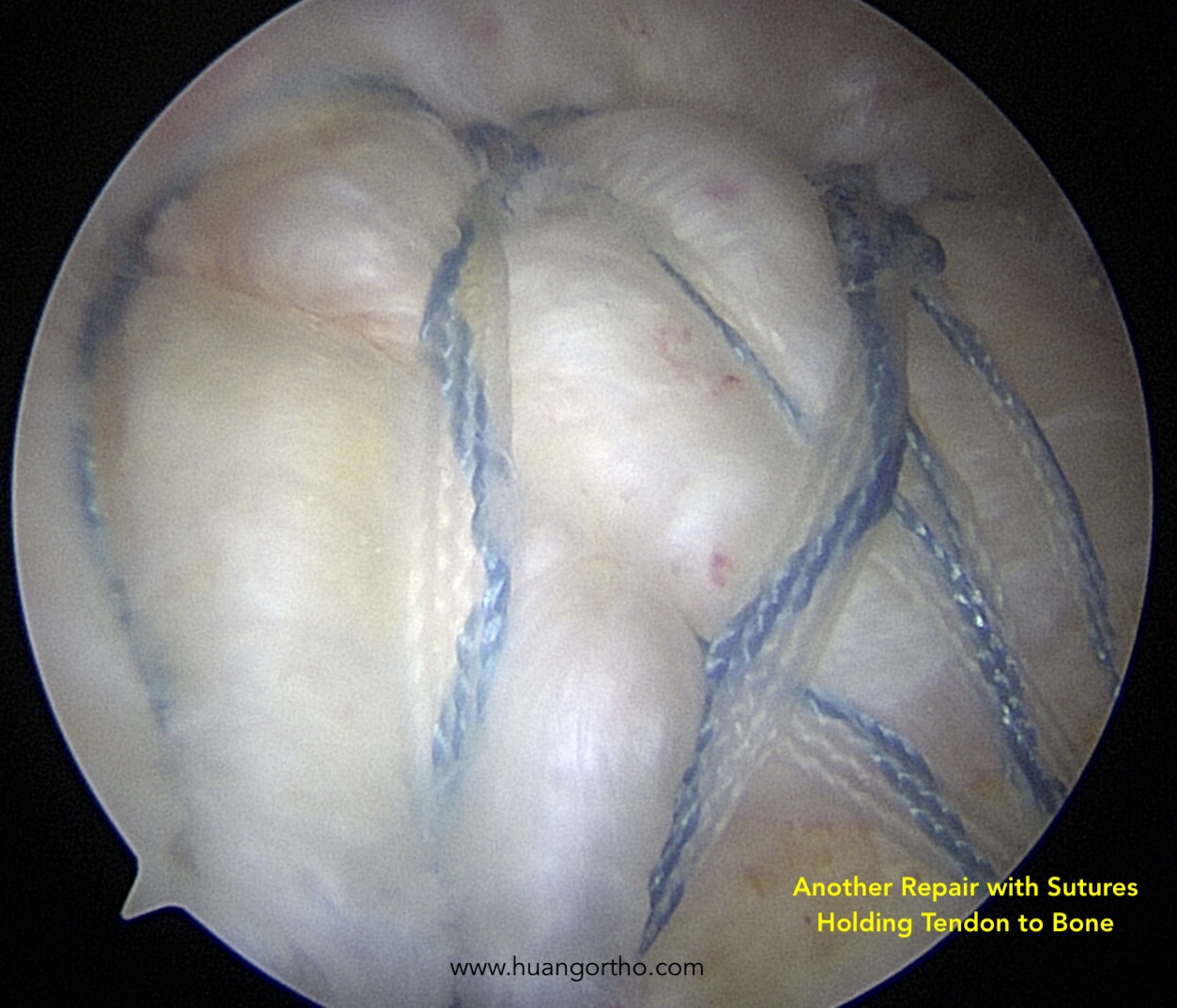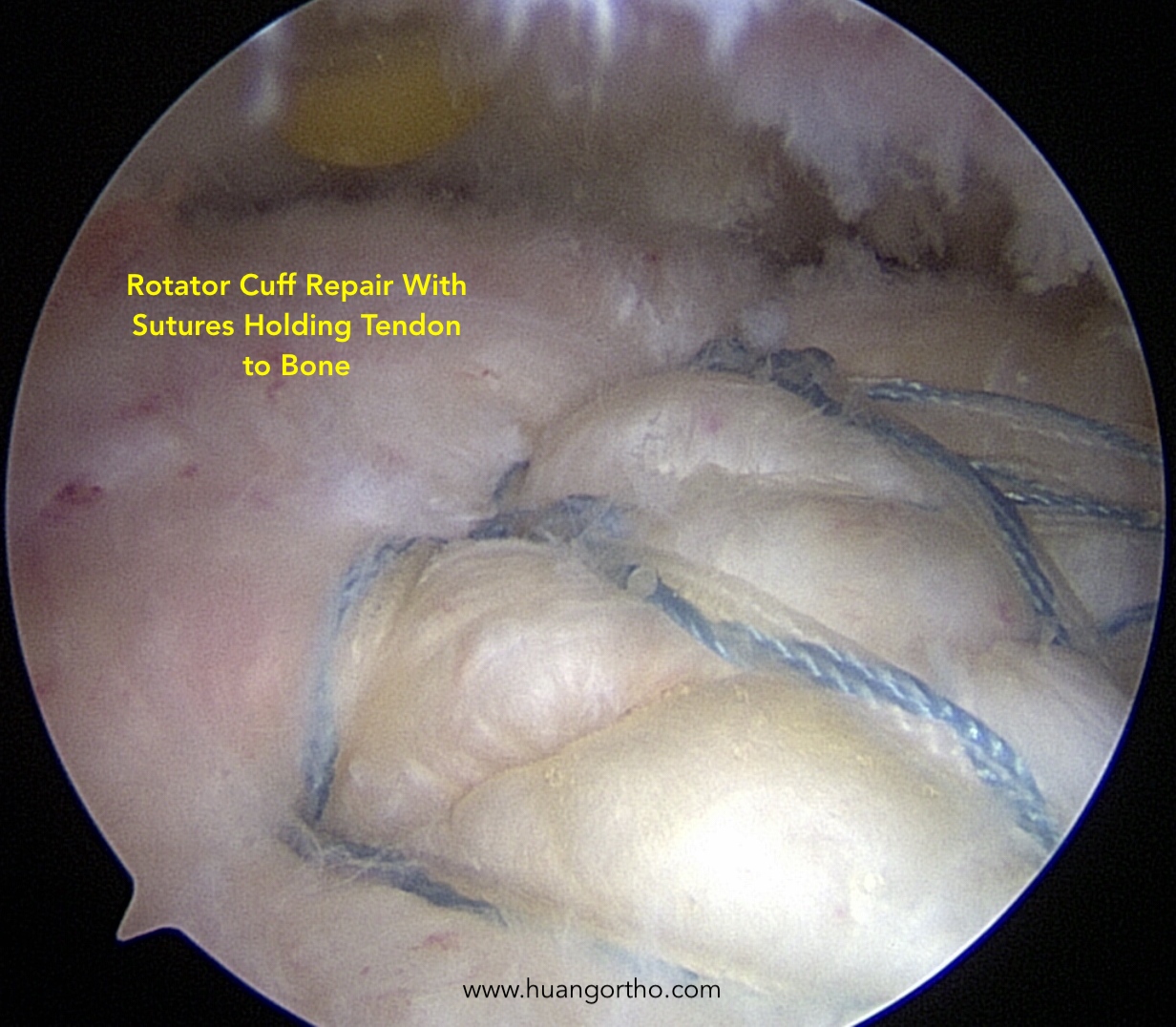Rotator Cuff Tendon Tears
What is a rotator cuff tendon?
A tendon is a structure that connects a muscle to a bone. The muscle cells contract which then pulls on the tendon which then pulls on the bone to produce an action at the joint.
The rotator cuff tendon is a term we use to describe any or all of four different muscles-tendon units that surround the shoulder joint. Each of the muscle-tendon units produce slightly different actions but taken together the rotator cuff tendon allows humans to reach away from their torso, reach above their shoulder, and behind their back. Some typical daily activities that use the rotator cuff tendon include washing/brushing your hair, putting your coat on, tucking in your shirt behind your back, etc. The four different muscle-tendons are:
Supraspinatus
Infraspinatus
Subscapularis
Teres Minor
Rotator cuff tendon tear on right image
What happens during a rotator cuff tendon tear?
Typically, the rotator cuff tendon tears at its insertion on the bone. In this case, the bone is the upper portion of the humerus.
Tears can characterized in many ways:
by number of tendons involved - one, two , three, or all four tendons.
by how much of the insertion is involved - partial thickness or full thickness.
by how far they have moved away from the bone insertion - minimally displaced or retracted
by how long they have been around - acute versus chronic
Arthroscopic picture of rotator cuff tendon tear
Arthroscopic picture of rotator cuff tendon tear
Mechanism of Injury
Most rotator cuff tendon tears happen over time without a distinct injury. The tendon itself degenerates with age (so called tendinopathy) and becomes more susceptible to tearing
There are times when a patient will feel the rotator cuff tendon tear. This can be associated with a lifting motion or a fall.
Symptoms of a rotator cuff tendon tear
The most common symptom is pain along the front and outer aspect of the shoulder. This pain radiate down the arm toward the elbow and toward the shoulder blade and base of the neck as well.
Pain is worsened with reaching or overhead activities
Pain can be worse at night
Weakness can also be present, especially when trying to lift overhead. In the acute setting, the patient will often remember a week or so when they could not lift their arm.
Numbness, tingling or pain radiating to the hand is NOT a typical symptom of a rotator cuff tendon tear
Treatment options for rotator cuff tendon tear
A couple facts to know:
The tendon tear cannot heal itself.
The tendon tear will often become larger over time (months to years)
Non-surgical treatments - will not heal the tendon tear but can help with pain
Non-steroidal anti-inflammatory medications - ibuprofen, Tylenol, etc.
Rest and avoidance of overhead reaching
Physical Therapy program to maintain range of motion and strength
Injections
Corticosteroid (cortisone) injection - can lower inflammation
Biologic injection? Injections such as platelet rich plasma or stem cell injections are being considered. There are a few studies looking at these biologic treatments. Please see our Stem cell and PRP page for more information. Some references are listed below.




Surgical treatment
Usually is discussed when non-surgical treatments have failed and pain/weakness persists
The goal of surgery is to reconnect the tendon to the bone that it tore away from.
This is typically accomplished arthroscopically (minimally invasively) and is done as an outpatient procedure
The patient needs to discuss the length of time in sling, post-operative rehabilitation and risks of surgery with their surgeon.
Surgical case where patient had previous rotator cuff repair 3 years prior but had another tear. Revision repair performed but augmented with graft.
Can a rotator cuff tendon be repair multiple times?
The short answer is yes. The rotator cuff tendon can be repaired more than once. However, the success of the repair is dependent on multiple factors including: tendon quality, bone quality, size of tear, duration of tear, and whether or not there has been fatty atrophy of the muscle belly.
In some instances, the tendon can be repair, but is augmented with extra tissue (cadaver graft) to add structure to the repair and also potentially act as a scaffold for improved healing.
Massive Rotator Cuff Tear. This patient has had multiple prior repairs that continue to fail. Tendon tear was retracted and scarred down.
Is there a limit to what we can repair?
In some situations, the size of the rotator cuff tear is too large or too retracted to be repaired anatomically. This often happens when a tear has been present for a long period of time or a patient has had multiple repairs.
Also, when a tear has been present for a period of time, the muscle portion of the rotator cuff complex can atrophy and turn from muscle to fat. This is called fatty infiltration and can be seen on a MRI.
If there is significant fatty infiltration of the muscle, the patient may not regain full function after a rotator cuff tendon repair as the repair cannot reverse the fatty infiltration that has already occurred (although the repair may prevent further muscle loss).
Superior Capsular Reconstruction Graft in place. It has been contacted to patient's glenoid and humeral head and remaining rotator cuff tendon.
Superior capsular reconstruction
Superior capsular reconstruction (SCR) is a newer method to treat patients with large to massive rotator cuff tears without a joint replacement. In a nutshell, the procedure places a graft of tissue above the humeral head (ball) and glenoid (socket) in order to restore the position of the ball in the socket. Please see our dedicated page on Superior Capsular Reconstruction.
Recent research that looks at these difficult tears:






